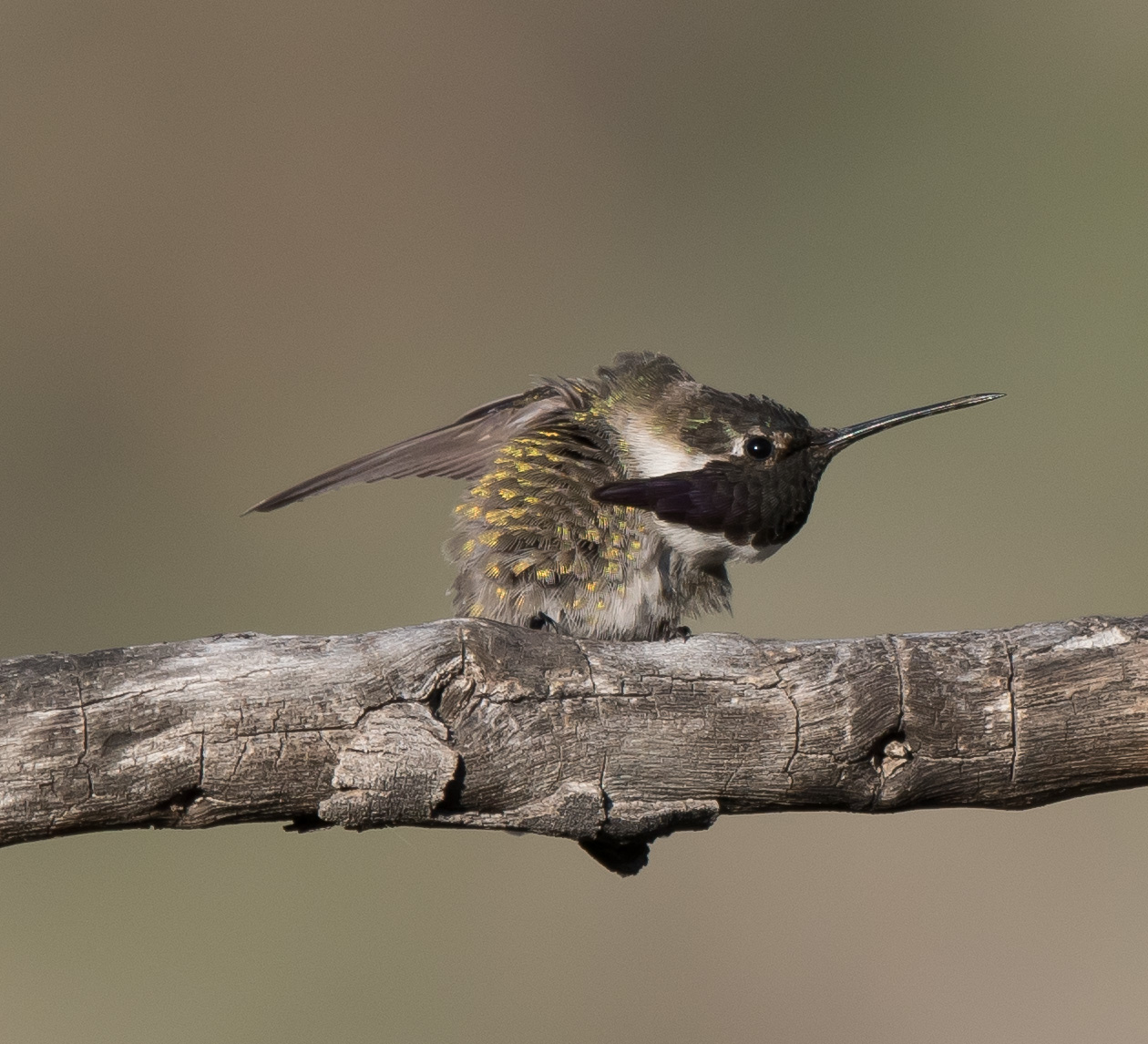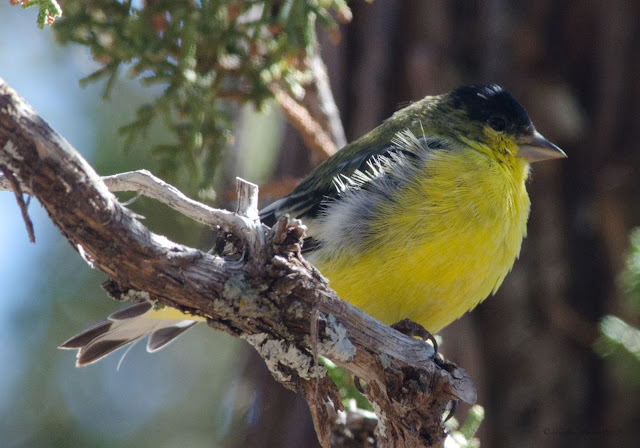With my car in the shop for repair, I stayed close to home this weekend with a birding excursion on Sunday only, and I opted for the Gilbert Riparian Water Preserve which is probably the best place for racking up a lot of species of birds in one spot in the suburban area around Phoenix. It is easy access for just about anyone and with the constant changing of water levels in the 7 ponds, you never know what you might encounter when paying a visit. Many rarities have been seen here throughout the years and this spot is well known to just about every birder in the state of Arizona. When I arrived at about 6:30 in the morning I quickly found another birding friend, Bernie Howe, so we then completed our adventure together. And in the process of our birding together we did find a bit of a rarity in the birding world. We had found a fairly large flock of Inca Doves in the plowed under sod of Pond 5 and while scanning the many doves, I discovered one that stood out as being a bit different. We had found a Ruddy Ground-Dove which is not a new bird to either of us, nor the state of Arizona, but they are quite uncommon. Their normal breeding range is much further south in Mexico, but occasionally a stray shows up in the American southwest. When checking on the eBird web site, for the year 2012, there has been a sighting in Texas and about a half dozen in the state of Arizona, all of them in the early part of the year. To many people it is not a dramatic bird to view, but for those that are listing birds, it is always a nice bird to add for the year. Below is a photo of the Ruddy Ground-Dove and also a photo of an Inca Dove, which often gets ignored (but shouldn't) by many birders.
Ruddy Ground-Dove
Inca Dove
This area of upturned sod in the south part of Pond 5 must have been a great place for feeding for the birds. Even while we were checking out the doves, we had various sparrows flying in for visits and scavenging in the dirt for seeds and maybe even some insects. We had a huge number of White-crowned Sparrows along with a Song Sparrow, some Savannah Sparrows, a Dark-eyed Junco, and some Abert's Towhees. (Yes, the Junco and the Towhee belong to the Sparrow family!) The Junco seemed a bit out of place as I normally see them in higher altitudes in pine forests. All the birds were having a merry ole time feeding until a Northern Harrier flew over and then they all took cover in the nearby trees.
White-crowned Sparrow
Song Sparrow
Savannah Sparrow
Dark-eyed Junco
Abert's Towhee
Now on to some of the water birds that we found. Needless to say, I saw many more birds than the number of photos I have, but that is usually the case. While we were scanning the many ducks a Black Phoebe flew onto a sign in the pond right in front of us and posed for a couple of shots before it realized that there were people close by and then off it went! So along with the phoebe's photo we also have photos of an American Wigeon, a Mallard drake, and an American Coot. OK, so the Mallard is probably one of the most common ducks in the US, but that green head in the right light is still stunning. And the coot is quite handsome when you get to see them up close.
Black Phoebe
American Wigeon
Mallard
American Coot
The final photo is one of the many Anna's Hummingbirds found in this location. It is a resident all year in parts of Arizona and is probably the most common hummer in Arizona. What a feisty little hummer and quite amusing to watch. They have no fear and if one is wearing red, it is not uncommon for one of these little hummers to fly to within a couple of feet of your head and check you out from several different angles. It can be quite an experience.
Anna's Hummingbird

























































